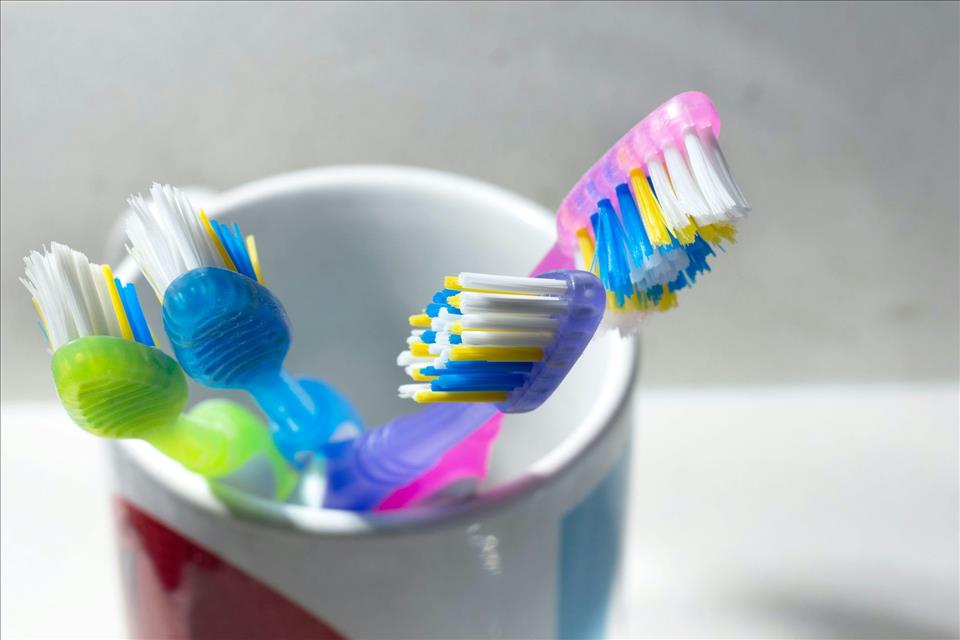
Toothbrushes And Showerheads Covered In Viruses 'Unlike Anything We've Seen Before' New Study
The researchers, from Northwestern University in Illinois, swabbed 92 showerheads and 36 toothbrushes. They described what they found as“unlike anything we've seen before” and “absolutely wild” . But how alarming is this finding? And what should you do to remain safe?
It is increasingly recognised that wherever you look for microbial species (viruses and bacteria) you will probably find them, particularly in damp places where they thrive, such as showerheads and toothbrushes. The fact that bacteria-infecting viruses were found in great numbers on showerheads and toothbrushes should not come as a surprise. Where there are bacteria, there will inevitably be viruses that infect them.
People's homes are host to a variety of microbial communities , which include bacteria, viruses, fungi and protozoa. And it has been known for over a decade that showerheads and their hoses can harbour various bacterial species. These include ones that can cause ill health, such as mycobacteria, which can cause respiratory infections, Legionella which causes legionnaire's disease and Pontiac fever, and Pseudomonas aeruginosa, which can cause ear and eye infections.
ShowerheadsThese bacteria have been found on showerheads at levels over 100 times those found in tap water.
In showerheads, there will inevitably be viruses that infect the bacteria found on them. And the more species of bacteria there are, the greater the diversity of phages likely to be present .
The presence of a microscopic ecosystem in your showerhead also means every time you shower, you are coating yourself in the showerhead bacteria and their related phage viruses. And this is an infection risk .
To disinfect your showerhead, soak it in vinegar. It has the added benefit of removing any limescale.
Unscrew the showerhead, brush off any soap residue, and place the showerhead in a plastic bag or other container with enough undiluted white vinegar to cover the item. Leave it for up to two hours.
Rinse the showerhead well after taking it out of the vinegar solution, and repeat every month or so, depending on usage .
ToothbrushesThe researchers at Northwestern University also looked at phages inhabiting regularly used toothbrushes. Unsurprisingly, they also found a diversity of phages on the brush heads.
During brushing, toothbrushes come into contact with structures in the mouth (gum, teeth, tongue, cheeks, uvula and palates). And each of these is home to hundreds of species of bacteria and other microbes.
Oral microbes play an important role in keeping the mouth healthy by excluding harmful germs (pathogens), helping digest food, and regulating the working of the heart and immune system.
The bacterial diversity of the mouth and tooth microbiomes will, as the US study found, influence the diversity of phages deposited onto toothbrushes.
The study provides an interesting snapshot of the diversity of the oral micro-ecosystems (bacteria and viruses) that are deposited on toothbrushes but may cause some people to worry that the microbes on their toothbrushes are a potential source of infection.
The toothbrush viruses identified were bacterial, not human viruses so they are not a health concern. However, while toothbrush microbes are not a risk to the toothbrush owner, as the microbes on it are their own, they can cause infections in others if a toothbrush is shared. One person's harmless oral microbes can be another's pathogens, leading to illnesses ranging from colds to endocarditis (a life-threatening inflammation of the heart's inner lining).
Phages explained.
It is a good idea to clean your toothbrush regularly. The NHS advises running it under the hot tap for about 30 seconds, followed by air drying.
Other websites advise soaking toothbrush heads in antibacterial mouthwash or denture cleaners. For electric toothbrushes, you should follow the manufacturer's cleaning guidance .
The take-home message from the Northwestern study is that we live in a richly microbial world and that interactions with bacteria and other microbes in our homes are an integral part of our human biology. Also, despite many new phage species being discovered, there is no cause for alarm – as long as you follow the advice above and keep your showerhead and toothbrush clean.

Legal Disclaimer:
MENAFN provides the
information “as is” without warranty of any kind. We do not accept
any responsibility or liability for the accuracy, content, images,
videos, licenses, completeness, legality, or reliability of the information
contained in this article. If you have any complaints or copyright
issues related to this article, kindly contact the provider above.


















Comments
No comment